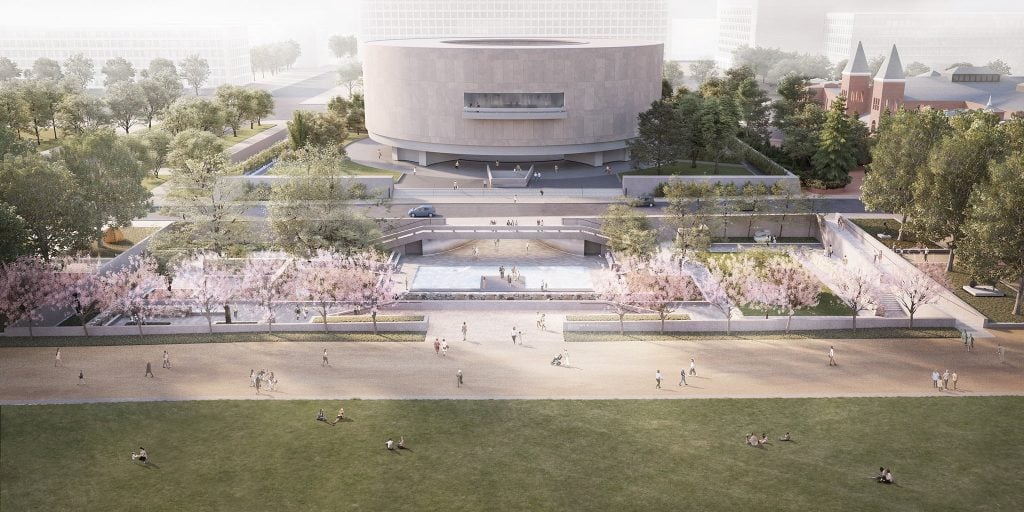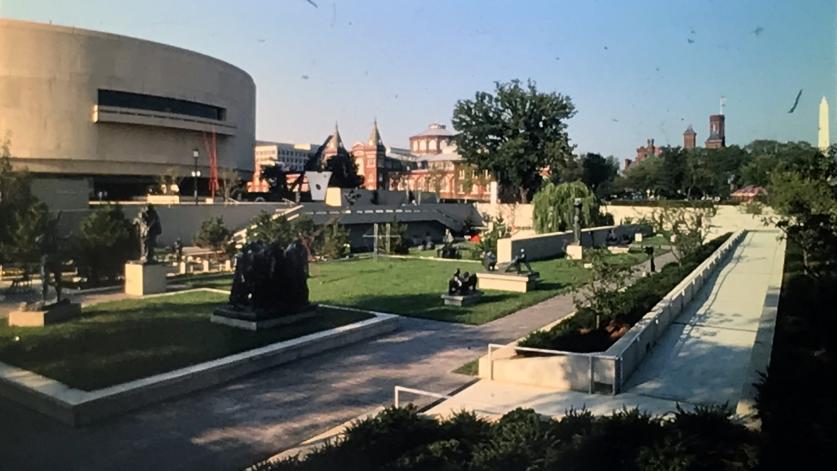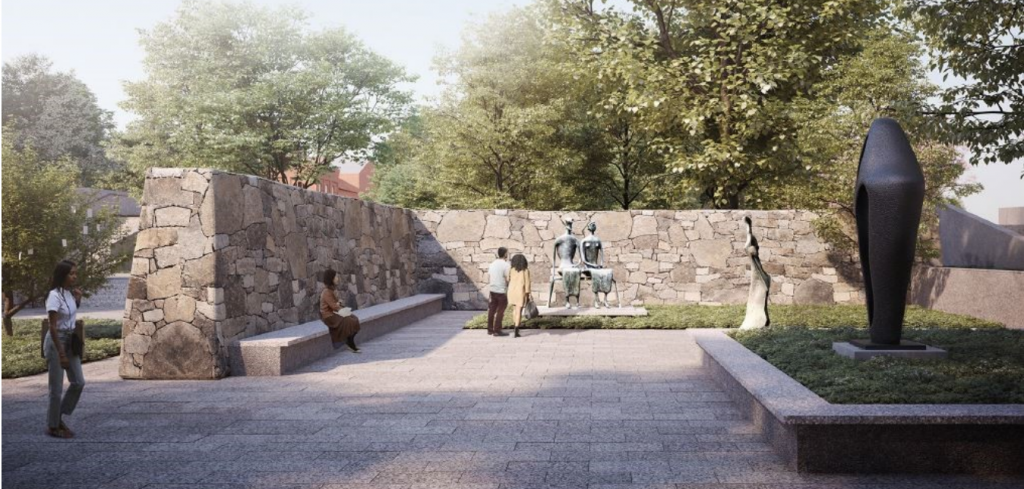Art World
The Hirshhorn Museum Is Charging Ahead With Plans to Overhaul Its Sculpture Garden—But It Must Win Over Skeptics First
One planning commissioner said that part of Hiroshi Sugimoto's proposed design "reeks of Olive Garden."

One planning commissioner said that part of Hiroshi Sugimoto's proposed design "reeks of Olive Garden."

Sarah Cascone

The fate of what has been dubbed the largest artwork in Washington, DC, hangs in the balance as an opposition group has mobilized against the planned installation.
The city’s Hirshhorn Museum and Sculpture Garden wants to move forward with a revitalization of its campus featuring a new design by Japanese artist Hiroshi Sugimoto, who is also responsible for a recent renovation of the institution’s lobby.
But the Cultural Landscape Foundation has led a battle against some of the planned changes, questioning elements of the design that it says would deleteriously alter the visions of original architect Gordon Bunshaft and landscape architect Lester Collins.
At a National Capital Planning Commission hearing on December 3, members unanimously gave the project a preliminary green light, but questioned certain design elements flagged by the Cultural Landscape Foundation.

The Hirshhorn Museum and Sculpture Garden in Washington, D.C., in 2007. Photo by Gryffindor, public domain.
When the Hirshhorn first opened in 1974, the museum’s barren concrete grounds, prone to sweltering heat in the summer, were not well received. The institution commissioned Collins to address shortcomings to the design, which lacked shade and vegetation. The 1981 redesign retained the integrity of Bunshaft’s design, including a central reflecting pool that mirrors the building’s long rectangular window.
Sugimoto’s plan dramatically alters that portion of the grounds, doubling the size of the pool and expanding the paved surfaces around it. The Cultural Landscape Foundation agrees that the revitalization work, announced in 2019, is in large part necessary, but objects to the enlarged pool, and to replacing a concrete partition wall with ones built from stacked stones.
“Our mission is to expand access to art,” Hirshhorn board chair Dan Sallick said in a statement issued to Artnet News. “This new design has the potential to draw in many more of the 30 million annual visitors on the National Mall for an art experience that starts outside and seamlessly draws visitors under Jefferson Drive to the plaza and to the museum’s front door on Independence Avenue.”
But Cultural Landscape Foundation CEO Charles A. Birnbaum doesn’t agree.
“The complex is a work of art,” and these changes “will damage this carefully calibrated artistic ensemble,” he told the planning commission this month, calling the stacked stone walls “a discordant design element.”

The redesigned Hirshhorn Sculpture Garden by Lester Collins. Photo courtesy of the Smithsonian Archives, 1983.
Birnbaum also expressed concern that Hirshhorn leadership has appeared reluctant to acknowledge the artistic nature of the museum building and grounds, even though its website states that “Bunshaft conceived the Hirshhorn as ‘a large piece of functional sculpture.’”
When asked directly if the museum was a work of art at a hearing in October, Hirshhorn director Melissa Chiu said: “I don’t think it’s about my own opinion on this.”
“We are pleased the National Capital Planning Commission awarded approval for our preliminary design of our sculpture garden by Hiroshi Sugimoto,” a museum representative told Artnet News in an email. “We are moving forward with what will be a transformational project for the Hirshhorn.”
It appears, however, that the planning commission actually has serious concerns, and the Cultural Landscape Foundation triumphantly described its vote as “a major speed bump” for the museum’s plan.
“To be perfectly honest, stacked stone to me … if it’s the wrong kind … [it] just reeks of Olive Garden,” said one commissioner, Mina Wright, at the meeting, according to the Cultural Landscape Foundation blog. “That is not a good look on anybody.”

A rendering of Hiroshi Sugimoto’s stone walls in the Hirshhorn garden. Courtesy of the Hirshhorn Museum and Sculpture Garden.
In a 2019 commission hearing, Chiu described Sugimoto’s proposed stone walls as “his curatorial intervention,” noting that “he’s been doing these stone walls in a number of different architectural projects, especially in Japan.” (In response, Birnbaum criticized the fact that Sugimoto’s concept did not grow organically from the original minimalist design; the Hirshhorn countered that Bunshaft and Collins were themselves inspired by Japanese gardens.)
The commission’s report asked for “a comprehensive rationale for the programming needs” that necessitate the changes. Commissioner Beth White noted at the meeting that “those elements still need deeper work and deeper explanation.”
Earlier this year, the Cultural Landscape Foundation’s intervention led the DC Historic Preservation Review Board to rescind its approval for a redesign of the entry plaza at the National Geographic Society. The organization was told to go back to the drawing board with an eye toward preserving artist Elyn Zimmerman’s 1984 sculptural installation, Marabar.
The Cultural Landscape Foundation was also instrumental in forcing the Frick Collection to revise its controversial expansion plans to save the Russell Page-designed garden—at the expense, however, of its historic circular music room.